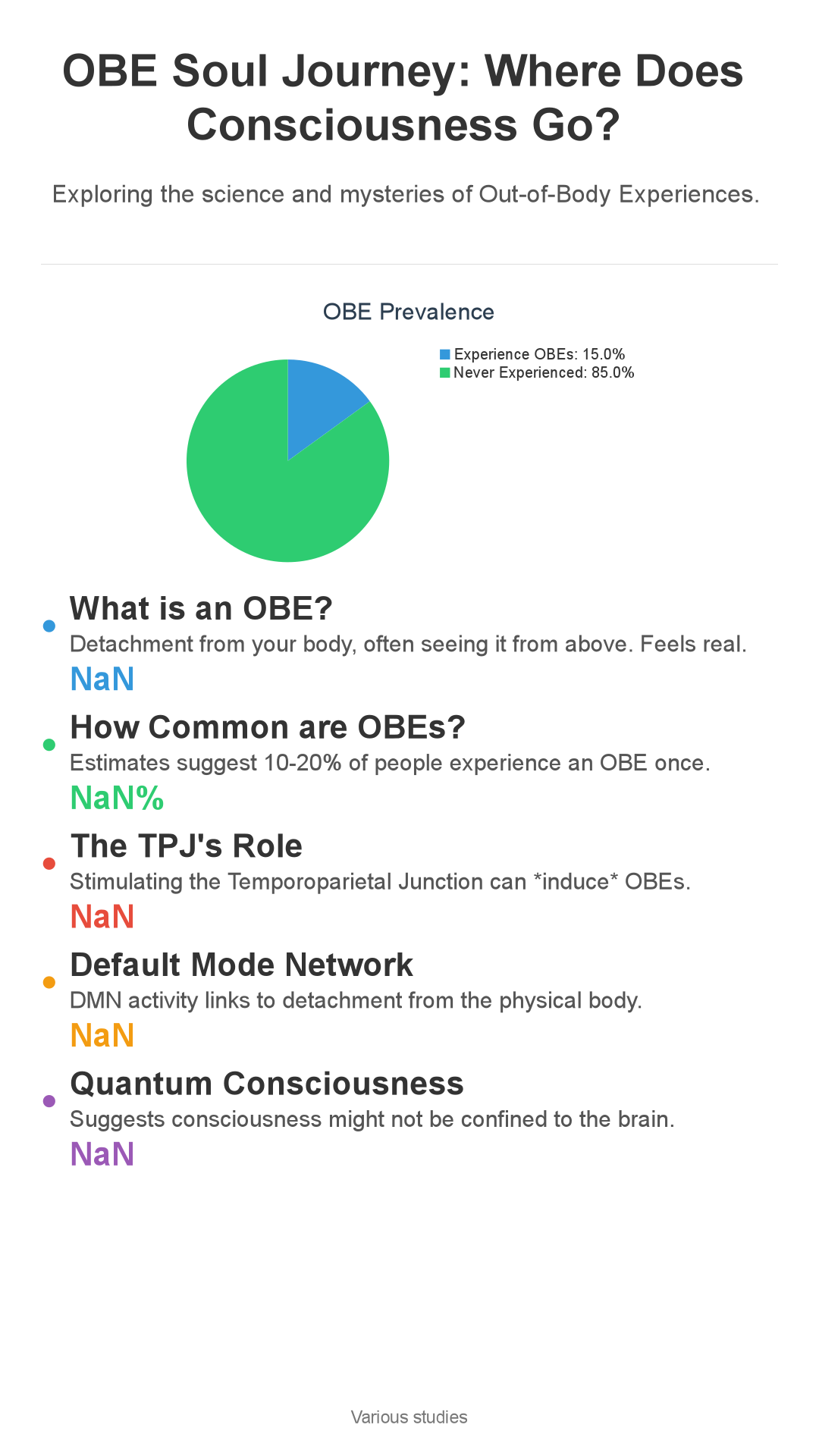
Ever wondered what's *really* happening when someone has an out-of-body experience? It's more than j
Ever felt like you were floating, watching yourself from above? Out-of-body experiences (OBEs) have captivated people for ages, sparking the ultimate question: where does your consciousness *actually* go? Give this a like if you’ve ever wondered! Let’s explore the fascinating science behind it.
Alright, curious minds, let’s ditch the ordinary and dive into the intriguing, sometimes eerie, and potentially life-altering world of Out-of-Body Experiences, or OBEs.
We’re tackling the big question: what really happens to your “soul” (or, you know, your consciousness) when you feel like you’re hovering outside your body?
Defining Out-of-Body Experiences and Their Prevalence
What Constitutes an OBE?
First, let’s define our terms. An OBE is more than just a vivid dream. It’s defined by a clear sense of being detached from your physical form. Imagine watching a movie of yourself, but you’re in the audience, not on the screen. Key characteristics include:
- Detachment: A feeling of separation from your physical body.
- Visual Perspective: Often seeing your body from an external viewpoint, perhaps near the ceiling.
- Emotional States: Experiences can range from serene and euphoric to anxious and frightening.
- Perceived Realism: Many describe OBEs as incredibly real, sometimes even more so than everyday life.

How Common Are OBEs?
You might think OBEs are rare, reserved for spiritual leaders and the fringes of science. But they’re surprisingly common. Estimates suggest that 10-20% of people will experience an OBE at least once. Several factors can influence how often these experiences occur, including:
- Stress and Trauma: Highly stressful or traumatic events can sometimes trigger OBEs.
- Near-Death Experiences (NDEs): OBEs are frequently reported during NDEs.
- Sleep Disorders: Conditions like sleep paralysis are often linked to OBEs.
- Meditation and Relaxation Techniques: Some intentionally induce OBEs through meditation or guided visualization.
The “Brain in a Vat” Hypothesis and OBEs
The Ultimate Reality Check: A Brain in a Vat?
Let’s get philosophical for a moment. Imagine a brain, suspended in a vat of nutrients, connected to a supercomputer that feeds it sensory information. This is the famous “brain in a vat” thought experiment.
The question: could that brain perceive a reality entirely separate from its physical location?
OBEs: A Brain’s Internal Simulation?
This directly relates to our understanding of OBEs. Could an OBE simply be the brain creating a consistent, though perhaps inaccurate, model of reality?
Instead of your “soul” leaving, maybe your brain is just generating a convincing simulation of being outside your body.
The Temporoparietal Junction (TPJ): The Location Master
Here’s where the science becomes truly compelling. Researchers have pinpointed a specific brain area, the temporoparietal junction (TPJ), as crucial for spatial awareness and our sense of self-location.
Studies stimulating the TPJ have even *induced* OBEs in some people.
The Default Mode Network and the Wandering Mind
What is the Default Mode Network (DMN)?
Another key player in the OBE puzzle is the Default Mode Network (DMN). The DMN is a network of brain regions most active when we’re at rest, not focused on a specific task. It’s linked to introspection, daydreaming, and thinking about ourselves and others.
The DMN: Building Our Sense of Self
The DMN is believed to be involved in shaping our sense of “self” and creating internal narratives. It helps us reflect on our past, imagine our future, and understand our place in the world. Essentially, it’s the part of your brain constantly building the story of “you.”
DMN Activity and Disembodiment
So, how does this connect to OBEs? Some researchers believe that increased DMN activity might contribute to the feeling of disembodiment during an OBE.
When the DMN is highly active, our attention might be turned inward, leading to detachment from our external environment and our physical body.
Quantum Consciousness and the Possibility of Non-Local Awareness (The Bizarre Answer)
Quantum Consciousness: A Deep Dive into the Unknown
Now, for the truly fascinating stuff. Quantum consciousness theories, such as the Orch-OR theory by Roger Penrose and Stuart Hameroff, propose that consciousness arises from quantum processes within the brain.
Quantum Entanglement and Non-Local Consciousness?
One of the most fascinating concepts in quantum mechanics is quantum entanglement, where two particles become linked and share the same fate, regardless of distance.
Some proponents of quantum consciousness theories speculate that quantum entanglement might allow for non-local consciousness – the idea that consciousness isn’t confined to the brain.
The Limits of Our Understanding
It’s important to acknowledge the limitations of our current understanding. While the TPJ, DMN, and quantum consciousness theories offer intriguing insights into the mechanisms behind OBEs, they don’t provide a complete explanation.
So, what do you think? Do you believe OBEs are purely neurological, or is there something more to them? Let us know in the comments!
And if you enjoyed this deep dive into the fascinating world of OBEs, subscribe for more mind-expanding content!

Enjoyed this? Check out our YouTube channel for video versions!
Enjoyed this? Check out our YouTube channel for video versions!



